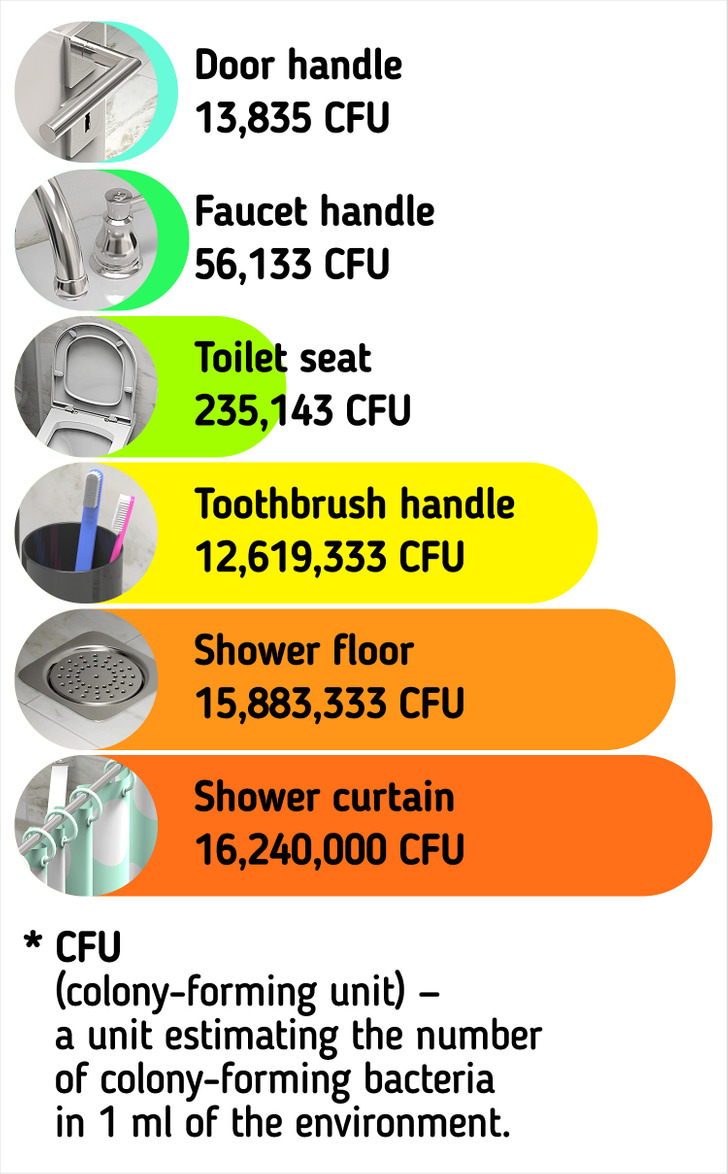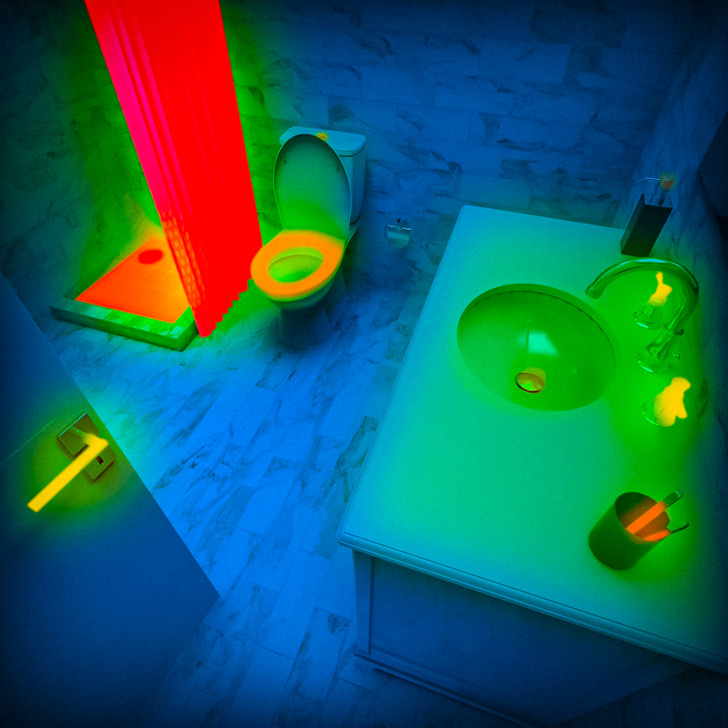The Dirtiest Places in the Bathroom Where There Might Be Dangerous Bacteria
Most of the germs in the bathroom, quite predictably, come from the toilet. They can easily get onto other things, like towels and toothbrushes. Thanks to the aerosol effect that appears when you flush the toilet with the seat open, bacteria can get into moist dark spots and start reproducing.
5-Minute Crafts found out about the dirtiest places in the bathroom and the germs that might be there. But are they really that scary?
Which things in the bathroom are the dirtiest?

In summer 2021, SafeHome did a small study to find out how many germs there are on different surfaces in the bathroom. The results were impressive because it turned out that the dirtiest place in the bathroom is not the toilet.
To make it easier, we’ll put all the surfaces in ascending order in terms of CFU (colony-forming units) — a unit of bacterial contamination of the environment.
- 13,835 and 56,133 CFU were found on the door handles and faucet handles respectively. In relation to the following numbers, these estimations are incredibly low. But don’t get too comfortable when you’re visiting public restrooms. Never forget to wash your hands with soap in order to prevent the germs from spreading.
- 235,143 CFU were found on the toilet. The number sounds big but it’s not. Your phone is 10 times dirtier than the toilet seat.
- The toothbrush handle has 12,619,333 CFU on its surface. Considering the fact that the brush itself can contain feces on it from the toilet, it’s incredible that the handle is even more contaminated.
- 16,240,000 and 15,883,333 — this is how many CFU there are on the shower curtain and the floor respectively. It’s 67 times more than on the toilet. These results are not unexpected because moisture is a great environment for germs.
Can bathroom germs harm us?

Most germs are completely harmless. But there are some that can be dangerous and they can be found in the bathroom:
- Gastrointestinal viruses that cause stomach problems. Norovirus is an example. These germs spread when you flush. They can easily remain on a hard surface for a week.
- Enteric pathogens that can be transmitted with feces. The examples are E. Coli, Salmonella, Shigella, and Campylobacter.
- Dermal and respiratory bacteria, such as Staphylococcus aureus, even the antibiotic-resistant MRSA, and Streptococcus pyogenes.
- Fungal infections, like athlete’s foot. They are transmitted when walking barefoot in the bathroom.
- Other fungi found in shower rooms. They don’t cause an infection but they might make asthma or allergies worse.
Even though there are all these bad germs, the good news is that only 1-2% of all the germs are pathogenic. The probability of you catching them exists but if you have the right hygienic routine, the risk is minimal.